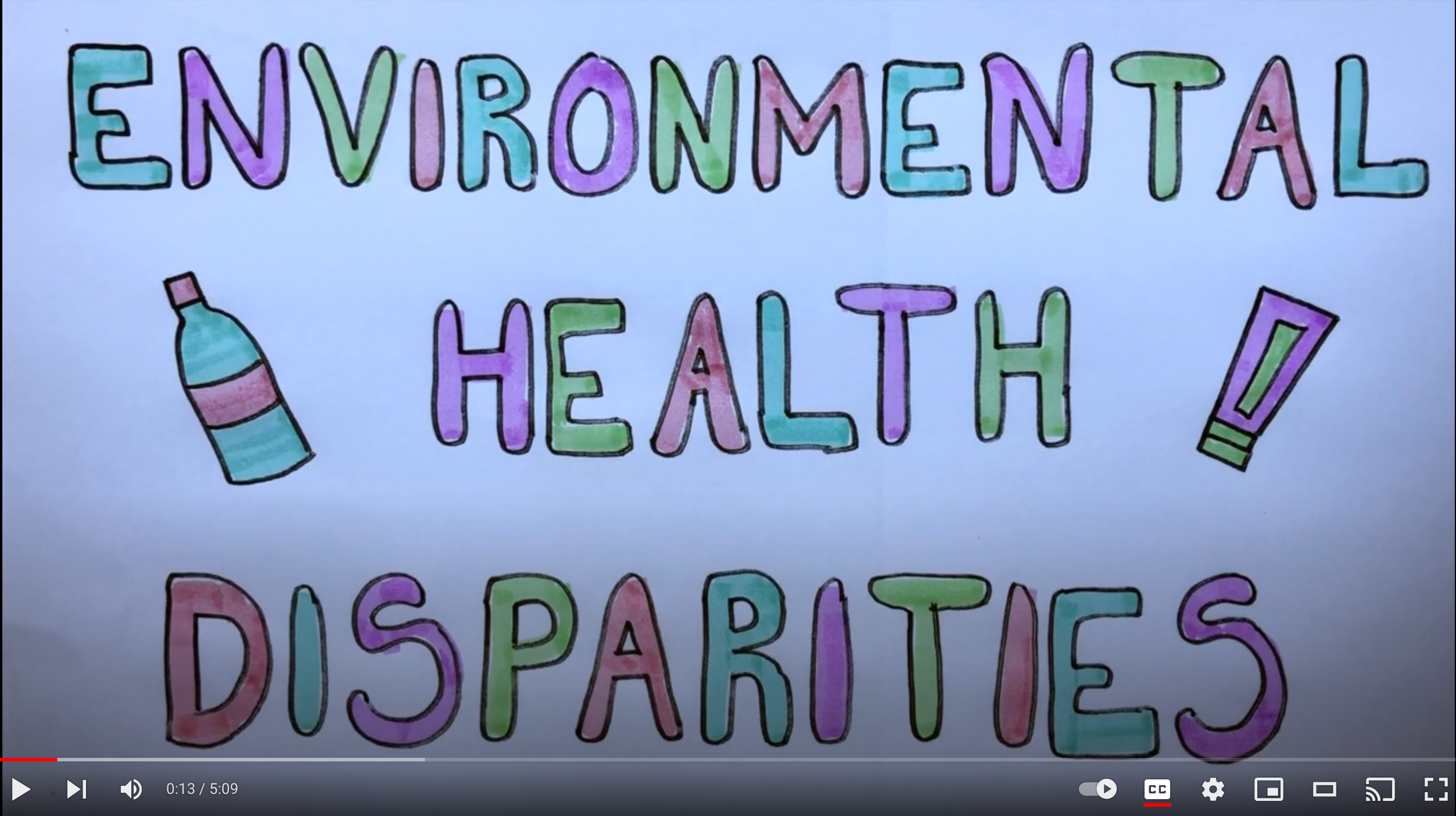Environmental Health Disparities: An Overview

Our Center partnered with EH student Carolina Mendonça to produce this short video that gives an overview of environmental health disparities.
References
Transcript
Health disparities are differences in the patterns of health and disease that systematically have a negative impact on the health of less-advantaged subgroups of the population. In this graph, we are going to look at how a disease or an adverse condition evolves along the years of life among different groups. The dashed line highlighted in green represents a reference group and the solid purple line is a less-advantaged group. The pink arrows pointing upwards are risk factors, that is, they increase one’s probability of having the disease. As we can see, there are many risk factors for the less-advantaged group when compared to the reference group.At the same time, interventions that could prevent this disease, here represented by the blue arrows pointing downwards, are much more common in the reference than in the less-advantaged group. There are three conditions that characterise an environmental health (EH) disparity. First, an association between less-advantaged group and outcome. Second, an association between less-advantaged group and environmental exposure. And third, an association between the environmental exposure and the outcome. Here, we will use hair product and age at the first period as an example. It is important to note that because we are only comparing blacks to whites, we will be using the term RACE and not ETHNICITY. First, we see that there is an association between race and age at first period, as black women tend to menstruate earlier than white women. We also observe that the black population uses more hair products, which is our environmental exposure. Finally, the use of certain hair products has already been associated with earlier age at first period because some of them contain endocrine disruptors. If we were to draw a model relating these three variables, we could consider race to be an effect modifier of the association between hair product use and age at first period. This would imply that there is some intrinsic biological difference between the races that would modify the effect of the exposure on the outcome. Alternatively, under a mediation model, we would consider hair product use to be a mediator between race and age at first period. This would mean that being from a certain race is what leads one to use or not some hair products and the use of these hair products influences the beginning of menstruation. To distinguish between these two models, we need to define which question we are trying to answer. The effect modification model could help us to answer the WHO and WHEN, but it is not helpful to answer the WHY question. Why? Why is the black population using more hair products? There is nothing particular about being black that would modify the effect of the hair products. If this were the case, there is nothing that could be done about it. Instead, structural racism and beauty injustice is what lies behind the difference between hair product use among blacks and whites. And this association is something that we can actually act on. Describing environmental health disparities is not enough anymore. If we want to decrease the gap between the groups, we need to use models, like the mediation analysis, that allow us to answer the WHY question.


